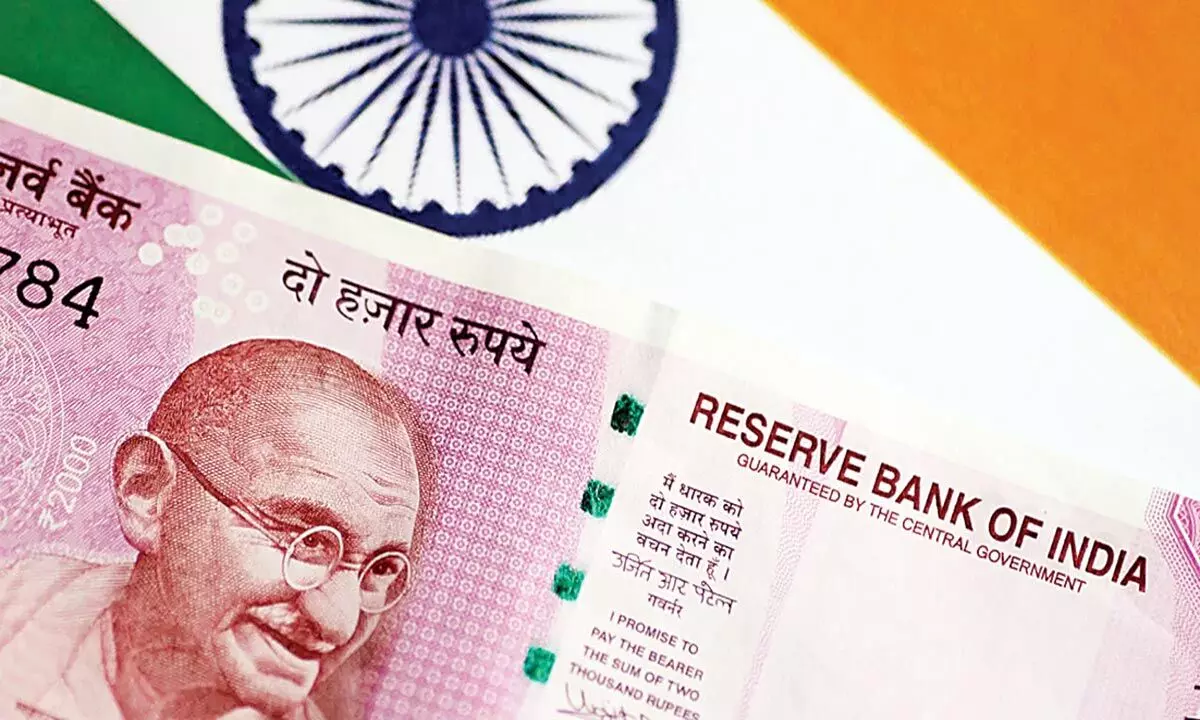India's growth story since independence
The scenario has changed vastly from 1947 when India could be counted among the poorest in the world. Today, it has moved ahead and is ranked among the largest economies
image for illustrative purpose

As India approaches its 75th anniversary, it is time to look back at the economic progress made over the decades. The scenario has changed vastly from 1947 when India could be counted among the poorest in the world. It has moved ahead and is ranked among the largest economies. In the current fiscal, it is even expected to be the fastest growing despite headwinds like a hostile external environment and inflationary pressures. It has reached this point after having shed the baggage of a socialist inward-looking economy after the path-breaking reforms of 1991.
It must be conceded, however, that the challenges at the time of independence were far different from today. When the British left this country, they had ensured that its share of world income was brought down from 22.6 per cent in 1700 to about three per cent. Over half the country's GDP came from the agriculture sector, which was also the major employer. Industry, by contrast, employed only about 2.5 million of the then population of 350 million.
It was in this backdrop that the first Prime Minister Jawaharlal Nehru felt the need to industrialise the country through state-owned enterprises on the model of the Soviet Union. Though technically it was described as a 'mixed economy' in the Industrial Policy Resolution of 1948, the fact is, the public sector was meant to remain at the 'commanding heights' of the economy.
Mahatma Gandhi, on the other hand, had a visionary approach towards economic growth. He envisaged a focus on developing villages and rural areas with local entrepreneurs, handicrafts and cottage industries. This idealistic approach was not considered feasible by the new government in view of the urgent need for industrialisation of the largely agrarian economy.
But the focus on heavy industry in the 50s led to the neglect of agriculture and consequently food shortages. India's need to rely on surplus food grains from the US under the auspices Public Law 480 gave an impetus to efforts to boost agriculture output. High yielding grain varieties became the basis of the Green Revolution which ensured that the country ultimately became self-sufficient in food.
The growth of the license raj regime not only continued but reached huge proportions in the 70s under Indira Gandhi. Some of the measures she took, however, were a response to the challenges of the time. For instance, bank nationalisation came after many private banks had collapsed post-independence, causing severe hardship to depositors. It was actually the first step towards financial inclusion as ordinary citizens could open accounts with only a small amount of money. Even the nationalisation of oil companies was a move towards ensuring the country's strategic security in hydrocarbons in the long run. The take-over of sick private companies, on the other hand, was a colossal error as it saddled the country with huge financial liabilities for decades.
These policies, however, could not give India the spurt in growth needed to bring millions out of the poverty trap. It was with the advent of the Narasimha Rao regime that the tide turned for the country. The reforms launched by his Finance Minister Dr Manmohan Singh in 1991 pushed growth from the tepid level of 3 to 4 per cent to an unprecedented 7 to 8 per cent from the mid-90s. The industrial liberalisation process and relaxation of import controls gave a spurt in all segments of the economy. The process was deepened during the Vajpayee era when privatisation was carried out of a wide range of public enterprises.
The challenges being faced now are very different from those at the time of independence or even those when reforms were launched in 1991. The economy is indeed much stronger though growth rates have declined ever since the Modi government came to power. India has the distinction of becoming the world's sixth largest economy in terms of nominal GDP. It has a world class IT industry and has become the third largest centre for creation of unicorns, the billion dollar companies.
At the same time, the scenario right now is not bright given the state of the global economy. The Ukraine conflict has led to disruptions of global supply chains that have had ripple effects in all countries including India. Prices of key metals and critical components have risen while shortages of semiconductors have slowed down manufacturing in a wide range of goods. International crude oil markets have shown a steep rise ever since the war began though there seems to finally be some cooling down with prices ranging around 100 dollars per barrel now.
These factors have led to inflationary pressures on the economy. This is reflective of rising inflation all over the world with even the US and Europe recording record levels, even higher than in India. Growth has naturally slowed down globally with central banks everywhere tightening rates. The US has even had two quarters of negative growth, indicating that recession is on the way.
India is not immune to the global upheaval. Yet it has been able to contain inflation better than many developed economies. It also has sizable foreign exchange reserves and relatively low foreign debt that is giving the economy enough resilience to ensure that there is a minimal impact of external headwinds.
As for the future, the country at 75 still has a long way to go. Grinding poverty still exists in many parts of the country and inequality in terms of wealth distribution is stark and undeniable. There is a wide digital divide that needs to be bridged to ensure that all are included in the ambit of development. Even so, there are more positives than negatives and the economy looks set to move ahead at a fast pace in the coming years.

